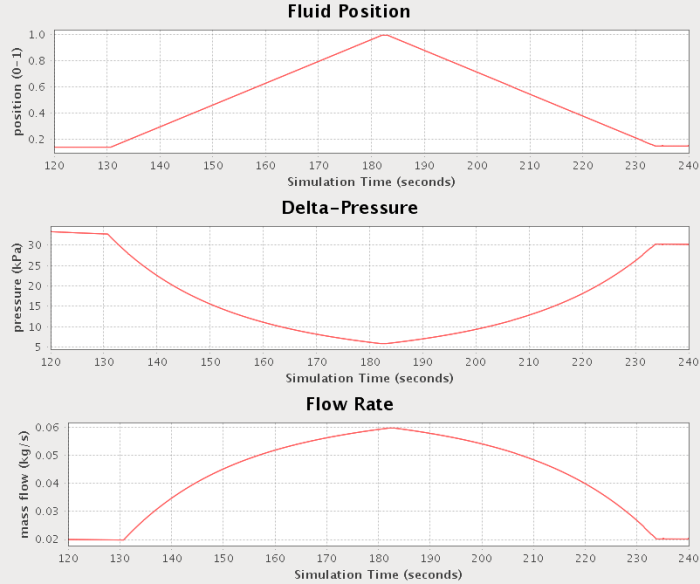Fluid_Aspect_Course_3_3 - nasa/gunns GitHub Wiki
A valve’s fluid position is usually controlled by some kind of signal aspect that models its driving mechanism. These may be motors, solenoids, or manually driven, with all manner of control schemes. Regardless, the interface to the fluid aspect is always the same: the signal aspect sends the position to the fluid aspect as the fraction of fully-open cross-sectional flow area (0-1). 0 totally blocks flow, and 1 is fully open.
This page has details on the exact terms to interface for various fluid link types.
All fluid conductor flows are ṁ = G * f(dp, ρ), where conductance G represents the path’s cross-sectional area. If we hold dp and ρ constant, then flow rate is proportional to the area. The valve position scales the area, so the flow rate is proportional to the valve position.
However, keep in mind 2 things:
- Flow through the nearby system affects the pressures across the valve, so usually when you change the valve position, the pressures will change too. Thus in practice you don’t always get the directly proportional relationship between position and flow rate.
- Depending on the internals of the valve mechanism, the position of the valve from the user’s interface (like a knob, handle, degrees of rotation, etc) does not equate directly to fluid position (flow area). Valve models usually ignore this distinction, but sometimes it might be important. The fluid aspect doesn’t care, so it is up to the signal aspect to model that relationship if it is needed.
Below is an example of a valve flow rate and delta-pressure as its position is swept. This shows the typical non-linear interaction that results from being in a complex system:

The fluid aspect valves are perfectly happy if there isn’t a valve controller signal aspect controlling them. You can leave a valve not interfaced, and initialize its mPosition and it will stay at that position. You can change mPosition manually in run-time. This is useful for tuning the valve performance before integrating it with the signal aspect.